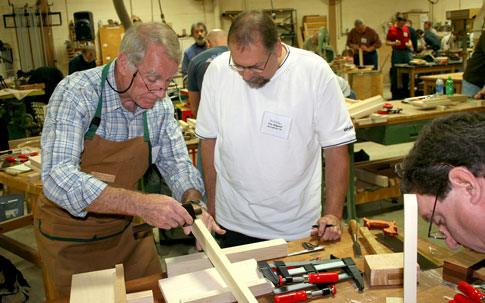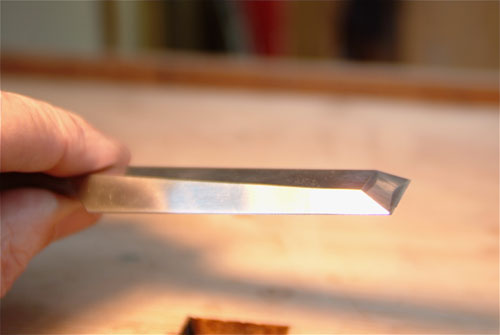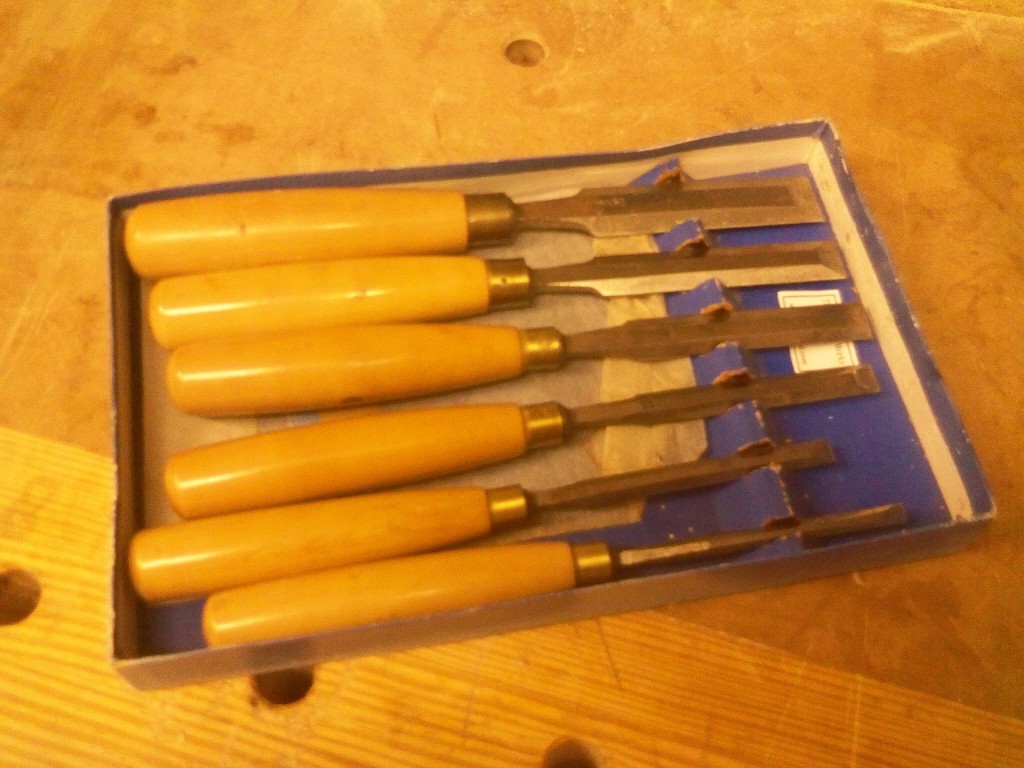I want to apologize to each of you – the loyal Tom’s Workbench readers. There was no quick poll yesterday… But I have a good excuse!
You see, I had travel plans… plans to attend the Woodworking in America conference up in Cincinnati, Ohio. Well, just south of Cinci in Covington, Kentucky, but you get the idea. The WIA, if you are unaware, is a big three-day woodworking summit featuring a large marketplace, numerous classes and plenty of opportunities to meet woodworkers from around the country.
While there, I didn’t have access to the Internet. I had an issue with being charged extra for web access while I was already staying at a hotel that caters to business travelers. I mean, honestly, it’s 2010 and most budget hotels don’t charge for the service. I’m sure that indoor plumbing was an upsell at hotels a long time ago, too.
Besides, I needed to hoard my pennies because I was there on a mission – I wanted to upgrade my chisels.
This isn’t the article I planed to write. My initial idea for this article was to go from booth to booth, holding chisels from the many manufacturers to feel their handles, check their balance and see how well they pared and chopped wood. There were some serious manufacturers there – Blue Spruce, Lie Nielsen, Hirsch, Veritas … they were sweet!
After my first lap around the floor, I stopped at the booth where Mike Siemsen was hosting the hand tool Olympics. Mike is an extremely knowledgeable woodworker who specializes in hand tools. I told him what I was looking to do, and his first response was interesting – he told me to look for old chisels. His reasons made sense – the older chisels were made in a time before the wide proliferation of power tools, so these were designed to be workhorses. He also told me that some of the new chisel manufacturers like to polish their blades to a mirror finish – which makes them look pretty, but rounds over the sharp edges in the corners. Regardless how well you sharpen the tool, you may never be able to truly get it ground to a sharp corner to pare into edges.
There was a booth I had to check out. Patrick Leach of The Superior Tool Works had a booth there and WOW… did he have some tools for sale. Classic planes, measuring tools, saws and chisels. First, I thanked him for running such a great site and told him how much I enjoyed reading his Blood and Gore page describing the different models of Stanley planes. I told him about what I was looking for, and – without blinking an eye – pointed across his booth crowded with classic tools and drooling woodworkers and showed me a set of chisels I might be interested in.
There on the table – in it’s original box – was a set of 1950’s vintage English Buck and Ryan chisels. Patrick explained that at the time, Buck and Ryan were well respected tool manufacturers working in London. The set of six chisels did need some work, but the steel was beautifully ground and the handles were made of handsome boxwood. They slipped into my hand comfortably and had a great balance. Patrick even worked with me on the price.
I fell in love with these chisels.
Now, I’m back home in Tampa getting ready for a day at work. But, I know a date with my diamond stones is in order to get these chisels into shape.
This year’s WIA event was full of outstanding experiences and reminded me why I fell in love with woodworking in the first place. Now, I’m really looking forward to spending some quality shop time with these new old chisels to see where the inspiration leads me.




I don’t get the advise about a polished chisel being rounded over. When you sharpen the tip to a very fine point, it is mirror polished. So it seems to me that mirror finish may not mean rounded – and a matte finish COULD be rounded even more.
Ahh, but this isn’t about a tip…
Say you have the ‘face’ corners of the chisel (the ones that go from the unbeveled face of the chisel to the sides you might hold with your fingers when trying to get extra control on a cut) buffed up really nicely. Remember, they are removing metal to get that nice finished surface. If someone is buffing these babies up on a production line and they round those corners, the very edges of the bevel you are honing to pare away wood in a corner won’t be truly square.
You’ll be taking what would be the dullest part of the edge into where you want to delicately pare away… Not a problem if cleaning out a mortise, but a deal of paring away wood between dovetails or any application where you need to finely remove wood…
I’ll try to dig up a photo to show in a little more detail…
Tom, the goal of sharpening is to reduce an intersection to “zero.” You can never get there, but the closer you get, the better. We’re not talking about a sizeable fillet down the edge of the chisels, but I’d agree that any reduction in material where the 2 faces meet would reduce the amount of sharpening possible. You could always lap the sides/edges of those shiny new babies to fix what polishing did.